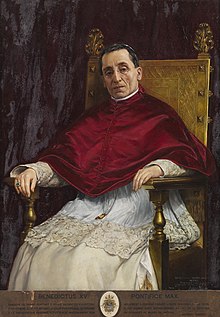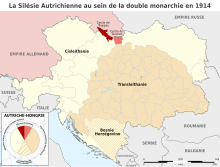Kreuznach Conference (October 7, 1917)
Richard von Kühlmann, then State Secretary for Foreign Affairs, engaged in comprehensive discourse on the political situation in Russia during the pre-conference exchanges.
The Secretary of State reiterated the assessments of his predecessors, Gottlieb von Jagow and Arthur Zimmermann, regarding Russia as a significant threat, even after imposing a favorable peace treaty and large-scale territorial concessions, reflecting a German victory over the new Russian government born of the February Revolution.
As early as August, the Austro-Hungarian Foreign Minister, Ottokar Czernin, informed his German counterpart, Richard von Kühlmann, of the opening of indirect talks between the Dual Monarchy and France.
[3] Additionally, a few days prior to this meeting, Ottokar Czernin publicly expressed his desire for a peace agreement that would exclude any territorial annexations or financial compensation.
Against this backdrop, in early August 1917, Pope Benedict XV published an appeal for a return to peace in Europe based on the status quo ante bellum.
However, as early as September 11, 1917, at a meeting of the German Crown Council convened at Bellevue Palace[Notes 5] in Berlin, the Reich's political leaders provided a detailed account of their objectives in Belgium, a point of contention with the Allies.
At the urging of Chancellor Georg Michaelis and State Secretary Richard von Kühlmann, the Kaiser agreed to relinquish the Belgian coastline but reconsidered after consulting with the Dioscuri.
Instead, they favored implementing solutions that would ensure Germany's self-sufficiency in Central Europe, facilitate its reorganization for the benefit of the Reich, or, failing that, obtain long-term agreements with neighboring states.
[16] Following a detailed discussion between the civilian and military representatives, Chancellor Michaelis reached a compromise between the positions put forth by the Dioscuri and those proposed by Secretary of State Richard von Kühlmann.
Historian Fritz Fischer divides this program into two groups: the demands that ensured the Reich's economic and political development after victory and the modalities for placing Austria-Hungary under trusteeship, which was experiencing the effects of the conflict.
[17] It is noteworthy that the German leaders, including the Dioscuri, Chancellor Georg Michaelis, State Secretary for Foreign Affairs Richard von Kühlmann, and Kaiser Wilhelm, all unanimously adopted free access to all European and global markets as their guiding principle.
[21] By requiring the Dual Monarchy to remain engaged in the conflict, Erich Ludendorff aimed to accelerate its complete exhaustion, strengthening the position for negotiating its submission to the Reich.
At the conference, Dioscurus stated that he wanted to eliminate any room for Austria-Hungary to maneuver or exercise autonomy by requiring his representatives to keep the Habsburg Empire engaged in the conflict until the conclusion of general peace.
[18][19] In this program, formal concessions were made, with the crown of Poland reverting to a Habsburg archduke under conditions allowing the Reich to exert control over the kingdom's political, military, and economic affairs.
Paul von Hindenburg and, even more so, his second-in-command Erich Ludendorff, anticipated a future conflict once German victory was assured through the imposition of peace treaties on the Allies.



